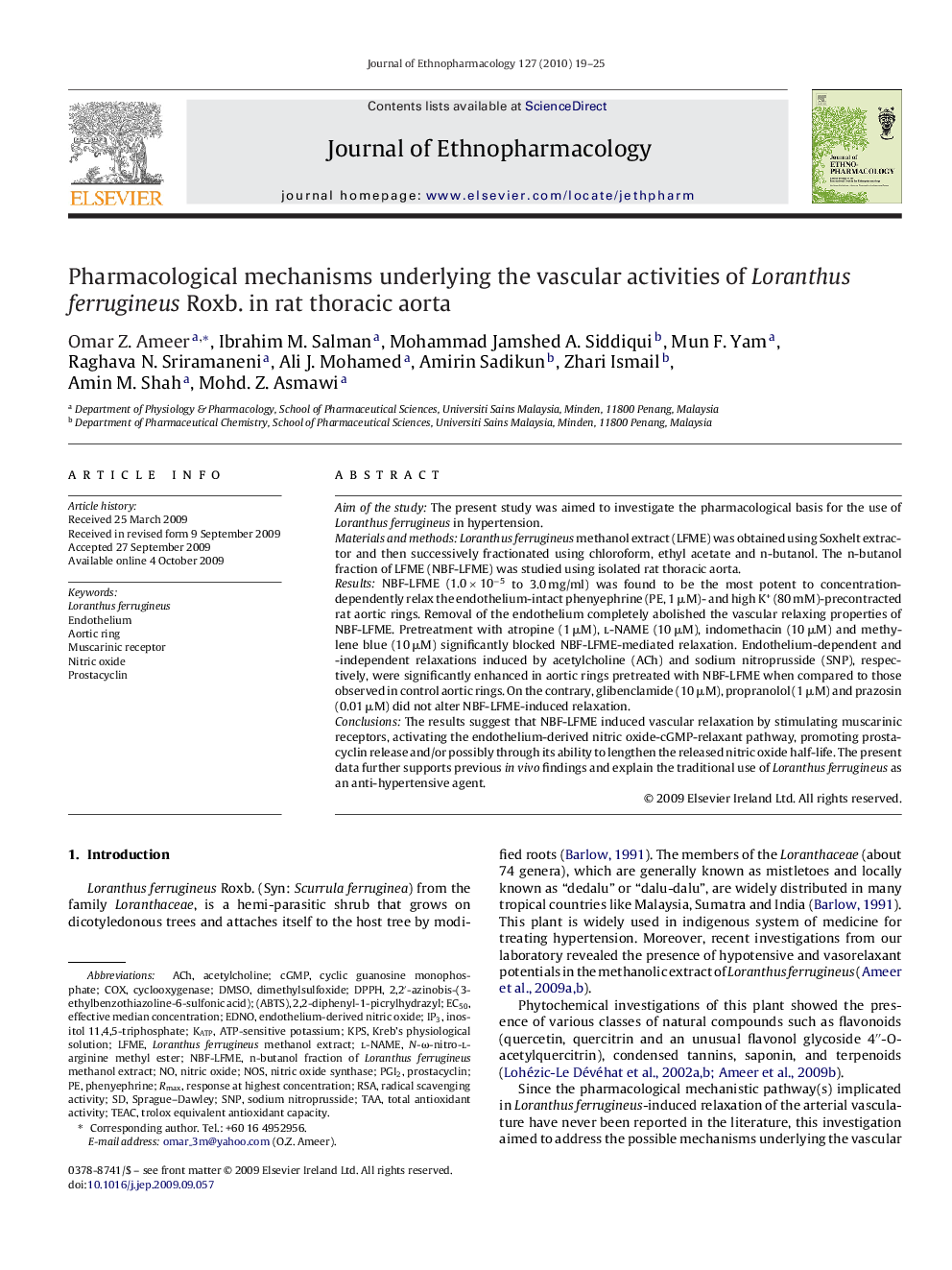| Article ID | Journal | Published Year | Pages | File Type |
|---|---|---|---|---|
| 2546357 | Journal of Ethnopharmacology | 2010 | 7 Pages |
Aim of the studyThe present study was aimed to investigate the pharmacological basis for the use of Loranthus ferrugineus in hypertension.Materials and methodsLoranthus ferrugineus methanol extract (LFME) was obtained using Soxhelt extractor and then successively fractionated using chloroform, ethyl acetate and n-butanol. The n-butanol fraction of LFME (NBF-LFME) was studied using isolated rat thoracic aorta.ResultsNBF-LFME (1.0 × 10−5 to 3.0 mg/ml) was found to be the most potent to concentration-dependently relax the endothelium-intact phenyephrine (PE, 1 μM)- and high K+ (80 mM)-precontracted rat aortic rings. Removal of the endothelium completely abolished the vascular relaxing properties of NBF-LFME. Pretreatment with atropine (1 μM), l-NAME (10 μM), indomethacin (10 μM) and methylene blue (10 μM) significantly blocked NBF-LFME-mediated relaxation. Endothelium-dependent and -independent relaxations induced by acetylcholine (ACh) and sodium nitroprusside (SNP), respectively, were significantly enhanced in aortic rings pretreated with NBF-LFME when compared to those observed in control aortic rings. On the contrary, glibenclamide (10 μM), propranolol (1 μM) and prazosin (0.01 μM) did not alter NBF-LFME-induced relaxation.ConclusionsThe results suggest that NBF-LFME induced vascular relaxation by stimulating muscarinic receptors, activating the endothelium-derived nitric oxide-cGMP-relaxant pathway, promoting prostacyclin release and/or possibly through its ability to lengthen the released nitric oxide half-life. The present data further supports previous in vivo findings and explain the traditional use of Loranthus ferrugineus as an anti-hypertensive agent.
